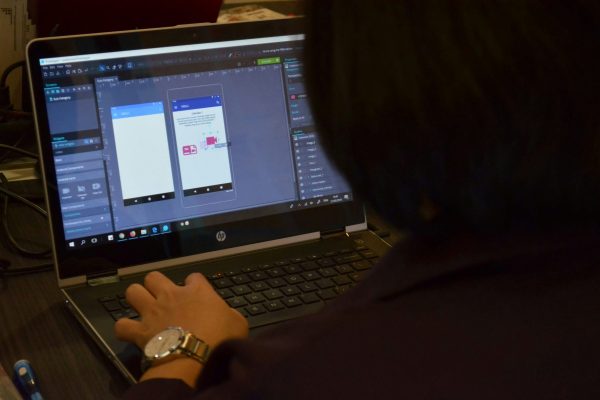At Stingz Interactive, we believe in building digital experiences that don’t just look good, but work exceptionally well. And at the heart of every successful website or app lies a crucial, often misunderstood, phase: wireframing and prototyping.
These aren’t just fancy buzzwords; they’re the foundational steps that ensure your digital product is intuitive, user-friendly, and ultimately, effective. Think of it like building a house – you wouldn’t just start laying bricks without a blueprint, right? Wireframes and prototypes are our blueprints and interactive models, preventing costly rebuilds and guaranteeing a solid structure from the ground up.
Wireframing: The Blueprint of Your Digital Product
Imagine you’re designing a complex building. Before you pick out paint colors or furniture, you need to understand the layout, where the rooms are, how people will move from one area to another, and where the essential utilities will be placed.
That’s exactly what wireframing is in UI/UX design.
A wireframe is a low-fidelity, skeletal representation of your website or app. It’s typically grayscale and deliberately lacks visual flair like colors, images, or fancy fonts. Why the simplicity? Because at this stage, our focus is laser-sharp on:
- Structure and Layout: Where will the navigation menu go? How will content blocks be arranged on a page? What’s the hierarchy of information?
- Functionality: What elements will be clickable? What actions can users take on this screen?
- User Flow: How will users move from one screen to the next to achieve their goals? What’s the logical path they’ll follow?
The Value of Wireframing:
- Clarifies Ideas Early: It brings abstract concepts into a tangible form, allowing everyone involved – from stakeholders to developers – to visualize the core structure.
- Facilitates Communication: Wireframes serve as a universal language, preventing misunderstandings about features and layouts before any detailed design work begins.
- Saves Time and Money: Identifying and fixing structural or functional issues at this early, low-cost stage is infinitely cheaper and faster than making changes later in development.
- Prioritizes Content and Features: By stripping away distractions, wireframes force us to focus on essential elements and their placement, ensuring a clear information hierarchy.
- Fosters Collaboration: Because they’re quick to create and easy to modify, wireframes encourage rapid iteration and feedback from all team members.
Prototyping: Bringing Your Blueprint to Life (and Testing It!)
Once the wireframes establish the foundational structure, it’s time to add layers of interactivity and visual detail. This is where prototyping comes in.
A prototype is an interactive, simulated version of your digital product. It can range from low-fidelity (a clickable wireframe) to high-fidelity (something that looks and behaves almost exactly like the final product). The key difference from a wireframe is interactivity.
The Prototyping Process at Stingz Interactive:
We take your approved wireframes and transform them into clickable experiences. This might involve:
- Adding visual elements: Incorporating preliminary colors, fonts, images, and branding elements.
- Implementing navigation: Making buttons and links functional to simulate user journeys.
- Simulating interactions: Showing how pop-ups, forms, or animations will behave.
The Indispensable Value of Prototyping:
- User Testing and Feedback: This is arguably the biggest benefit. Prototypes allow us to put a working model in front of real users, observe their interactions, and gather invaluable feedback on usability, clarity, and overall experience before a single line of code is written.
- Validates Design Decisions: By seeing the design in action, we can confirm if our solutions truly meet user needs and business goals.
- Identifies Usability Issues Early: Catching friction points, confusing navigation, or unmet user expectations during prototyping prevents expensive reworks in development.
- Enhances Stakeholder Buy-in: Presenting an interactive prototype is far more compelling than static mockups. Stakeholders can “experience” the product, leading to greater understanding and approval.
- Refines User Flows: By walking through the prototype, we can fine-tune the user journey, making it as smooth and intuitive as possible.
- Reduces Development Risk: Developers receive a clear, interactive model of the final product, minimizing assumptions and leading to a more efficient and accurate build.
The Stingz Interactive Difference: A Seamless Journey from Concept to Conversion
At Stingz Interactive, wireframing and prototyping aren’t isolated steps; they’re integral, iterative parts of our comprehensive UI/UX design process. We believe in:
- User-Centered Approach: Every decision, from the placement of a button to the flow of an entire application, is made with your end-user in mind.
- Collaborative Partnership: We involve you and your team throughout the process, ensuring your vision is consistently reflected and refined.
- Iterative Design: We embrace feedback, making continuous improvements based on user testing and stakeholder input.
- Efficiency and Transparency: Our systematic approach demystifies the design process, providing clear milestones and tangible deliverables.
Don’t leave your digital success to chance. By investing in thorough wireframing and prototyping with Stingz Interactive, you’re not just designing a product; you’re engineering a superior user experience that drives engagement, satisfaction, and ultimately, your business’s growth.
Ready to build a digital experience that truly connects with your audience?
Contact Stingz Interactive today and let’s start sketching out your success story.









